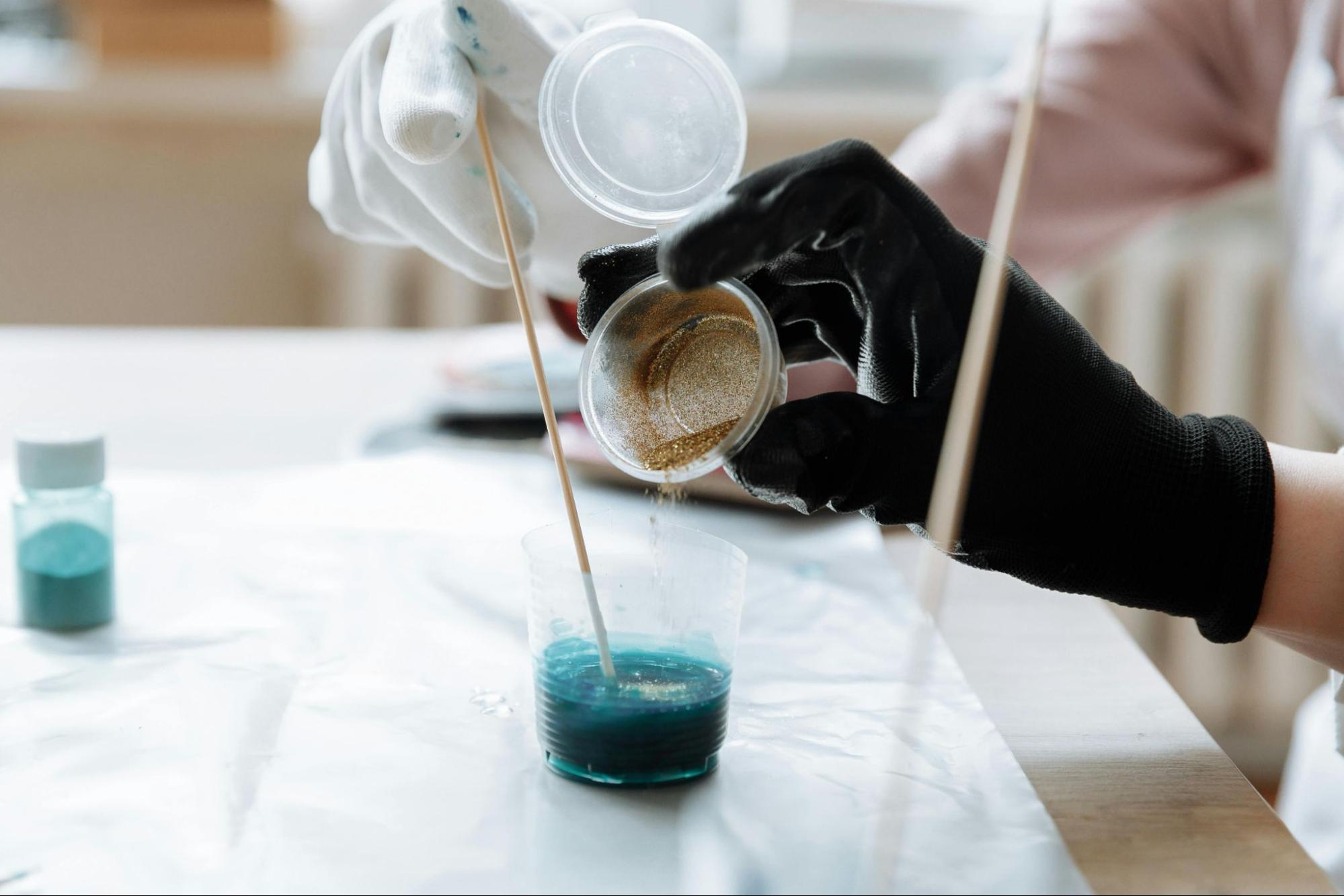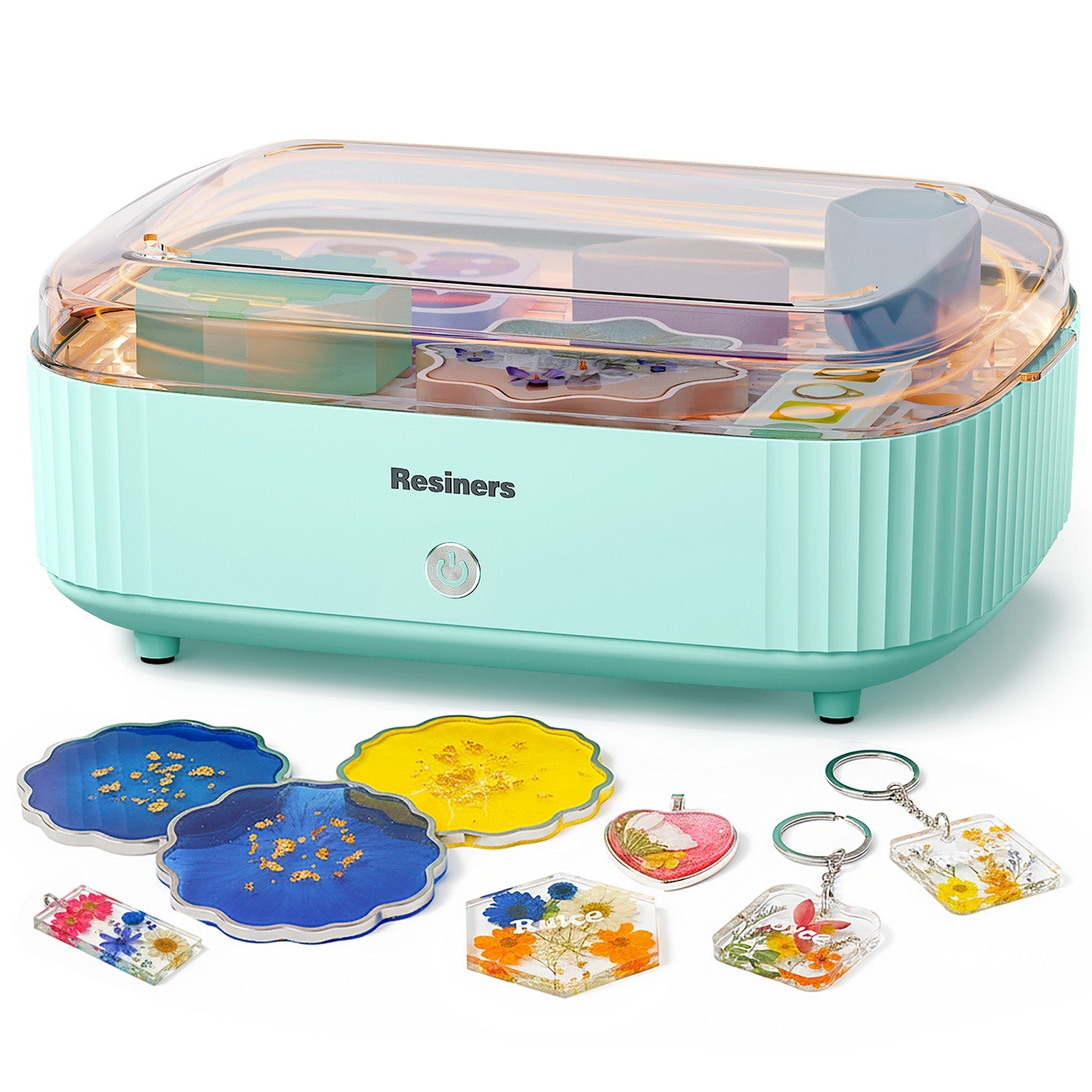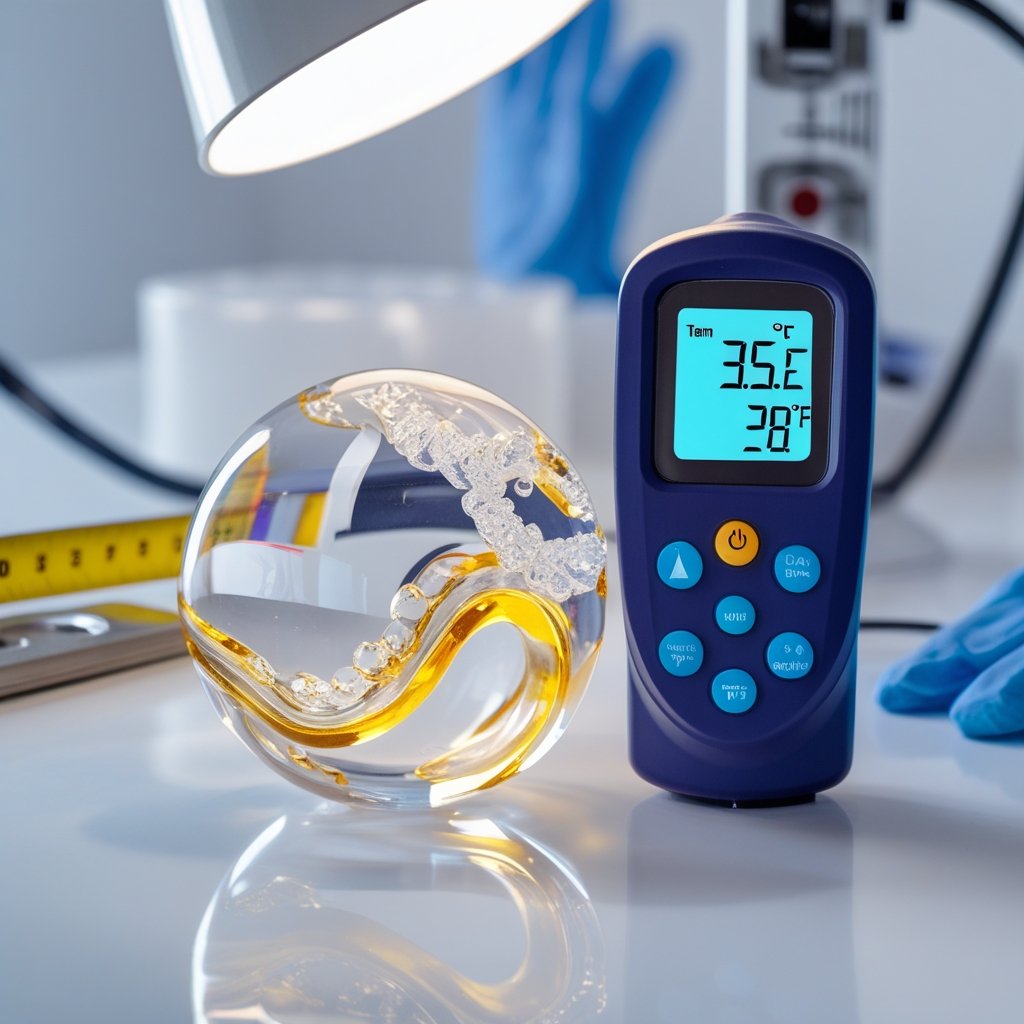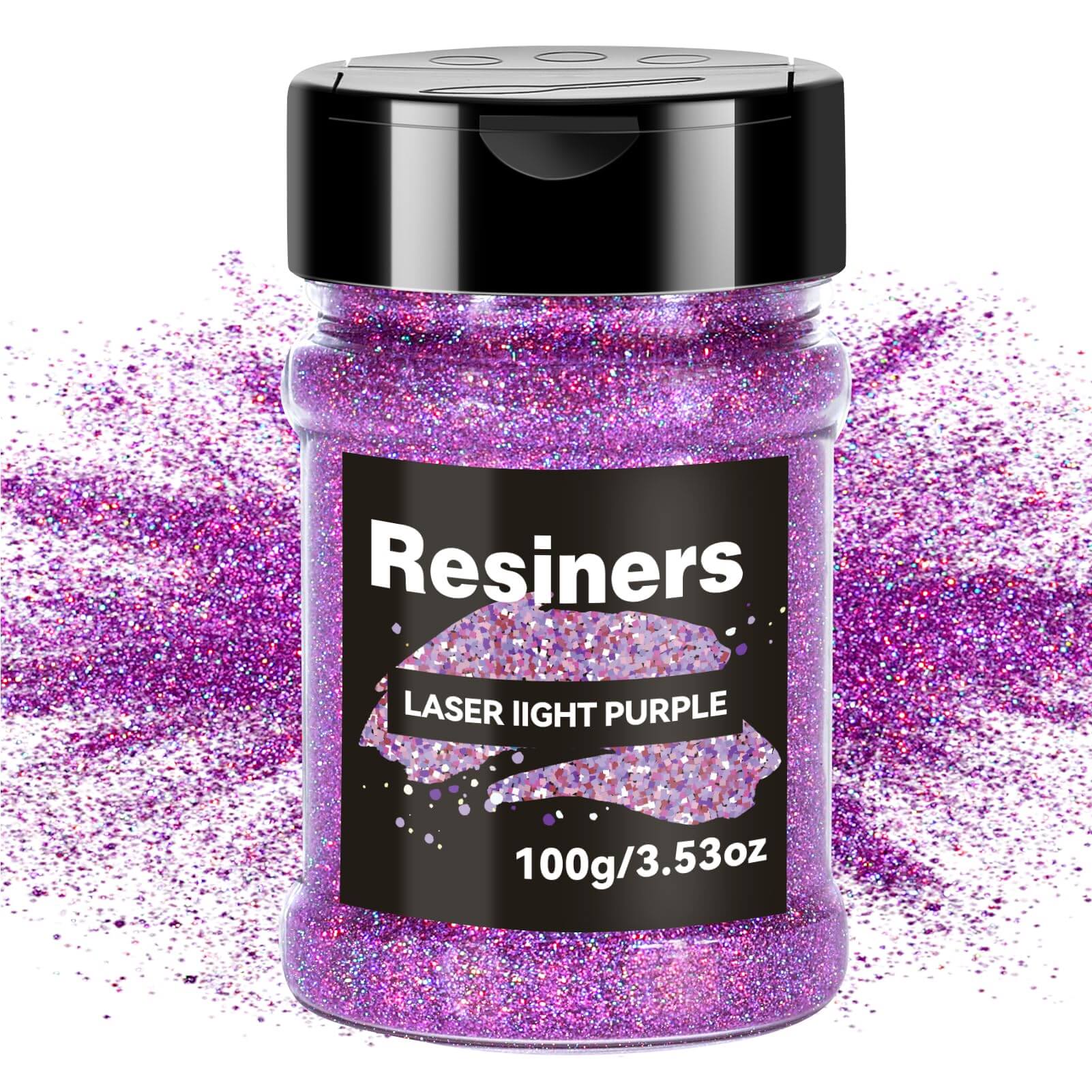Resin polish transforms dull, scratched projects into gleaming works of art with professional-quality shine.
When your beautiful creations lose their luster, the right polishing product can instantly restore that mirror-like finish. Specialized epoxy polishing kits offer targeted solutions for resin crafts. Even clear nail polish serves as an effective quick fix for smaller pieces.
Don't let scratches or cloudiness diminish your hard work—with the proper polish, your resin creations will dazzle again. Read on to discover all your options!
What Is Resin Polish And Why Your Projects Need It
Resin polish is a special product that brings back shine to resin pieces that have become dull or scratched.
Think of it like lotion for your resin projects! It helps transform cloudy surfaces into clear, glossy masterpieces.
When you create beautiful resin jewelry, tables, or decorations, they deserve to look their best. Over time, your resin items might lose their shine from regular use or exposure to chemicals.
There are two main ways to polish resin. You can:
- Sand and buff the surface
- Apply a special polish designed for resin
Polishing isn't just about making things pretty. A well-polished resin piece actually lasts longer too! The polish helps seal the surface and protect it from future damage.
For small projects like jewelry, tiny pointy swabs can help you reach difficult spots. Larger projects like tables might need different techniques and tools.
Some crafters even use a thin coat of fresh resin to hide sanding scratches. This trick works well when you need to fix imperfections in your work.
Essential Tools And Materials For Effective Resin Polishing

Getting a perfect shine on your resin projects requires the right tools and techniques. Here's what you'll need:
- Wet/dry sandpaper in multiple grits (400-3000+)
- Quality polishing paste or compound
- Soft polishing pads or microfiber cloths
- Clean water supply
- Paper towels
- Detail swabs for intricate areas
- Optional: rotary tool or buffer for larger projects
Always wet sand resin to prevent heat damage and minimize dust. While power tools speed up the process, hand polishing works perfectly for smaller pieces. Don't forget safety gear—gloves protect your hands, and a mask prevents inhalation of particles.
Preparing Your Resin Project Before Polishing
Proper preparation creates the foundation for a beautiful shine:
- Ensure your resin is fully cured (typically 24-48 hours)
- Work in a clean, dust-free environment
- Remove any mold marks or rough spots
- Clean your piece thoroughly between each step
- Wipe with alcohol after final sanding to remove oils and fingerprints
Take time to examine your piece for seam lines or imperfections that need addressing before polishing begins. Working in a well-ventilated area with eye protection is essential for safety.
Step-By-Step Sanding Process For Resin

Sanding resin takes patience but gives amazing results when done right. The process moves from rough to smooth using different sandpaper grits.
Coarse Sanding: The Foundation (120-240 grit)
Begin with wet 120-grit sandpaper for rough surfaces, moving in small circles or consistent back-and-forth motions.
Apply gentle pressure and check progress frequently by cleaning the surface. The entire piece should look evenly dull before proceeding.
Medium Grit Sanding: Refining the Surface (320-600 grit)
Progress through 320-grit to 600-grit sandpaper, maintaining wet sanding techniques. Change your sanding direction with each new grit to easily identify when previous scratches have been removed. Rinse thoroughly between grits to prevent cross-contamination.
Fine Sanding: Preparing for Polishing (800-2000+ grit)
Complete the sanding process with increasingly fine grits—800, 1000, 1500, and 2000+. Use extremely light pressure at this stage to avoid heat damage.
After final sanding, your resin should feel glass-smooth but still appear uniformly dull, indicating it's ready for polishing.
Wet Sanding Vs. Dry Sanding Resin: Which Works Better?
When working with resin, the way you sand it makes a big difference in your final piece. Let's look at both wet and dry sanding to help you decide which is best for your project!
Dry Sanding Resin
Dry sanding removes material faster, making it great for shaping your resin pieces. It's the go-to choice when you need to:
- Change the overall shape quickly
- Remove large imperfections
- Work through initial grit stages
One downside? Dust. Lots of it! Dry sanding creates fine particles that float everywhere. Make sure to wear a mask to protect your lungs.
Wet Sanding Resin
Wet sanding uses water as a lubricant while you work. The water helps in several ways:
- Reduces dust (big plus for your lungs!)
- Prevents clogging of sandpaper
- Creates a smoother finish at higher grits
Water also keeps your resin cool during sanding, which helps avoid heat damage to your piece.
Some sandpapers aren't made for getting wet, so look for ones labeled "wet/dry" for this technique.
Which Works Better?
For best results, try using both!
Start with dry sanding for rough shaping (80-220 grit). Then switch to wet sanding for finer work (320 grit and higher).
Remember that even with 2000-grit sandpaper, you won't get that wet-look finish. For that glassy shine, you'll need to polish after sanding.
Your choice also depends on your workspace. If you can't make a mess, wet sanding might be your friend!
Using Polishing Compounds On Resin Surfaces
Polishing compounds are your best friends when it comes to making resin shine! These special pastes help remove tiny scratches and bring out that glass-like finish you want.
To start, put a small amount of polishing compound on your resin piece. Don't use too much - a few dabs will do the trick!
You can apply polish in different ways:
- With a soft cloth for gentle polishing
- Using a drill with a polishing ball attachment for faster results
- With a handheld buffer for medium-sized projects
Be careful not to create too much friction! Too much heat can smear the resin surface and ruin your hard work.
For everyday projects, regular metal polishes work surprisingly well on resin. They're affordable and easy to find.
If you want professional results, try these popular options:
- Super Resin Polish - great for deep shine
- Autoglym - originally for cars but works wonders on resin
- Renaissance Wax - provides protection and shine
After polishing, some crafters add a layer of carnauba wax for extra protection. This natural wax creates a barrier against scratches and fingerprints.
Remember to work in a well-ventilated area when using polishing compounds. The chemicals can be strong!
Between sanding stages, use an air compressor or canned air to blow away dust. This prevents scratches when you move to finer grits or polishing.
Power Tools For Resin Polishing: When And How To Use Them

Power tools can make resin polishing much faster and easier. The most popular tool for this job is a Dremel, which works great for small pieces and detail work.
You'll want to use power tools after hand sanding with wet sandpaper up to at least 600 grit. This gives you a good base before machine polishing.
When to use power tools:
- For larger projects that would take too long by hand
- When you need a perfect mirror finish
- For polishing hard-to-reach areas
- When you have many items to polish
Common power tools for resin:
- Dremel or rotary tool
- Drill with polishing attachments
- Buffer/polisher (for large flat surfaces)
Always start your tool on a low speed setting. High speeds can create too much heat and damage your resin piece! Hold your resin firmly but don't press too hard.
Apply polishing compound to your buffing wheel or pad. Work in small sections, using light pressure and frequent stops to check your progress.
For best results, move the tool in a circular motion across the surface. Don't stay in one spot too long.
Remember to wear safety glasses when using any power tools. Tiny bits of resin and polish can fly around during the process.
Hand Polishing Techniques For Smaller Resin Projects

When working with tiny resin pieces like jewelry or small decorative items, hand polishing is perfect. You don't need fancy equipment to get professional results!
Start by gathering your supplies: sandpaper in different grits (220, 400, 600, 1000, and 2000), polishing compound, microfiber cloths, and water.
Basic Sanding Steps:
- Begin with 220 grit sandpaper to remove major imperfections
- Move to 400 grit, then 600 grit
- Continue with 1000 grit and finish with 2000 grit
- Always use water while sanding to prevent dust
Remember to rinse your piece between each grit change. This stops coarser particles from scratching your work.
For the final shine, apply a small amount of polishing compound to a soft microfiber cloth. Rub the compound onto your resin piece using circular motions. You'll start to see a brilliant shine develop!
Stubborn scratches? Don't panic! You can apply a thin coat of fresh resin over sanded areas to fill in scratches without redoing everything.
For wooden items with resin inlays, be extra careful. Use mineral spirits to remove any polishing residue from the wood after you finish.
Take your time with each step. Rushing through grits can leave tiny scratches that will be visible in your final piece.
Your hands might get tired, but the beautiful results are worth it. Hand polishing gives you complete control over your special resin creations!
Common Resin Polish Problems
Polishing resin can present challenges even for experienced crafters. Here are common issues and practical solutions:
Cloudiness and Stubborn Spots
Cloudiness typically occurs when sanding steps are rushed or skipped. Work methodically through sequential grits without jumping ahead. If cloudiness persists after polishing, return to fine-grit sanding (1500-2000) and progress more carefully through the final stages.
Scratch Resistance Challenges
Visible scratches after polishing indicate insufficient preparation. Each sanding stage must completely remove scratches from the previous grit. Sand in alternating directions to easily spot remaining marks, and take your time with each progression for best results.
Curing Complications
Inadequately cured resin will never polish properly. Ensure your piece has fully hardened according to instructions—typically 24-48 hours for most epoxy resins. Attempting to polish partially cured resin leads to disappointing results and wasted effort.
Other common issues include bubbles trapped in the surface, fingerprint oils affecting the finish, and temperature affecting polish performance. Different resin types (epoxy, UV, polyester) may require slightly different approaches, so adjust your technique accordingly.
Finishing Touches: Sealing Your Polished Resin
Protect your newly polished creation with an appropriate sealant to preserve its brilliant shine:
Selecting the Right Protection
- Choose a sealant based on your item's intended use:
- UV-resistant clear coats for outdoor items
- Food-safe sealants for kitchen accessories
- Durable topcoats for jewelry and frequently handled pieces
- Natural waxes for general protection
Apply thin, even layers with a soft, lint-free cloth using gentle circular motions. Allow each coat to dry completely before adding another or using the piece. Always test new sealants on a small area first to prevent unwanted reactions with your resin.
While this extra step might seem optional, properly sealing your polished resin significantly extends its beauty and protects your investment of time and materials.
Conclusion
Ready to watch dull resin transform into a dazzling masterpiece? With the right polish techniques, your creations will capture light like fine crystal! The journey from rough casting to mirror shine requires patience, but the magic moment when scratches disappear makes it all worthwhile.
Remember, professional results come from respecting each step—from coarse sanding through final buffing and protective sealing. Whether crafting jewelry that catches every eye or home décor that sparks conversation, your polished pieces will showcase your true skill.
Browse Resiners’ premium collection of resin curing machines, epoxy resin, and other resin accessories and elevate your creations from homemade to professional! With these quality tools in your arsenal, you'll never settle for anything less than perfection.
Frequently Asked Questions
What type of compound is ideal for giving my project that glass-like finish?
For that amazing glass-like shine, you'll want to use a compound made just for resins. Automotive polishing compounds work great, especially those with fine grit. These compounds have tiny particles that smooth out your resin without scratching it. Apply with a soft cloth using small circles. Remember to use only a little bit at a time!
Could you guide me on getting a shiny finish on my resin crafts without using polish?
Yes! You can get a brilliant shine without commercial polish. Try using toothpaste with a soft cloth - the mild abrasives work like polish. Another option is to sand with increasingly fine sandpaper (start at 400 grit and work up to 1500 grit).
Always keep your piece wet while sanding. When you reach the finest grit, buff with a microfiber cloth. A thin coat of mineral oil can also add shine in a pinch!
What's the secret to restoring the shine on my resin pieces that have dulled over time?
The key to bringing back that lost shine is progressive sanding. Start with 400 grit wet/dry sandpaper and gradually move to finer grits like 600, 800, 1000, and 1500. Always use water while sanding to prevent heat damage.
After sanding, apply a quality resin polish with a soft cloth. If your piece is really dull, you might need to apply a thin new layer of resin on top as a final "doming" coat.
Is there a DIY method for polishing resin items to achieve a professional look?
Absolutely! A popular DIY method uses household items. Mix baking soda with water to make a paste. Apply this to your resin with a soft cloth using circular motions.
Another trick is using car wax or petroleum jelly as a final step. Both create a nice shine. For deeper scratches, try wet sanding first, then use toothpaste on a cotton cloth to buff. Your items will look professionally finished!













コメントを書く
このサイトはhCaptchaによって保護されており、hCaptchaプライバシーポリシーおよび利用規約が適用されます。